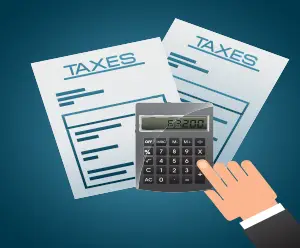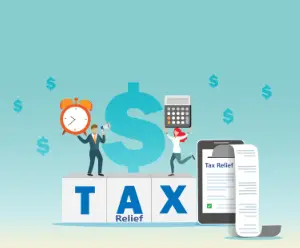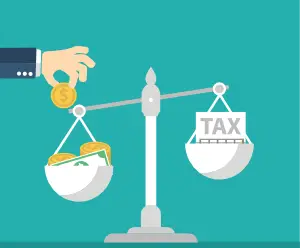
Understanding the IRS Substitute for Return
Click to ask Mike Ask Mike The Internal Revenue Service (IRS) Substitute for Return (SFR) is a term many taxpayers

Dealing with the Internal Revenue Service (IRS) can be a daunting task, especially when faced with penalties for failing to meet tax obligations. However, there are circumstances in which you may be eligible for relief through a process known as IRS Reasonable Cause Penalty Abatement. In this comprehensive guide, we will explore the concept of Reasonable Cause Penalty Abatement, the eligibility criteria, the application process, and some important considerations.
What is IRS Reasonable Cause Penalty Abatement?
IRS Reasonable Cause Penalty Abatement is a provision that allows taxpayers to request the removal of certain penalties imposed for late filing, late payment, or other compliance failures if they can demonstrate that they had a “reasonable cause” for not meeting their tax obligations on time. The IRS acknowledges that there are situations beyond a taxpayer’s control that can prevent them from fulfilling their tax responsibilities promptly.
Eligibility Criteria
To qualify for IRS Reasonable Cause Penalty Abatement, you must meet specific eligibility criteria and demonstrate that your failure to comply with tax requirements was due to reasonable cause. Here are some key points to consider:
Application Process
To request IRS Reasonable Cause Penalty Abatement, you need to follow a specific application process. Here’s a step-by-step guide:
Important Considerations
IRS Reasonable Cause Penalty Abatement can be a lifeline for taxpayers facing penalties due to circumstances beyond their control. It offers an opportunity to rectify compliance failures and avoid unnecessary financial burdens. However, it’s essential to understand the eligibility criteria, follow the application process diligently, and provide convincing evidence of reasonable cause. Seeking professional guidance when needed can also increase your chances of a successful penalty abatement request. Remember that honesty, transparency, and prompt action are key to resolving tax penalty issues with the IRS effectively.
You can now ask our AI assistant any questions you have about your tax debt or any tax-related issues. Whether you’re unsure about payment plans, need clarification on penalties, or want information on how to resolve your tax situation. Our AI is ready to assist you with all your tax-related concerns.

By interacting with our AI assistance, you agree to our terms & conditions. Enjoy our AI Tax Assistant responsibly.
Ask me any questions...
Related Posts

Click to ask Mike Ask Mike The Internal Revenue Service (IRS) Substitute for Return (SFR) is a term many taxpayers

Click to ask Mike Ask Mike The Internal Revenue Service (IRS) Substitute for Return (SFR) is a term many taxpayers

Click to ask Mike Ask Mike The Internal Revenue Service typically operates within a 10-year window, commencing from the

Click to ask Mike Ask Mike The Internal Revenue Service (IRS) operates within specific timeframes dictated by statutes of limitations

Click to ask Mike Ask Mike understanding the ins and outs of the 10-year statute of limitations (SOL) is essential.
Recent Posts

Click to ask Mike Ask Mike The Internal Revenue Service (IRS) Substitute for Return (SFR) is a term many taxpayers

Click to ask Mike Ask Mike The Internal Revenue Service (IRS) Substitute for Return (SFR) is a term many taxpayers

Click to ask Mike Ask Mike The Internal Revenue Service typically operates within a 10-year window, commencing from the

Click to ask Mike Ask Mike The Internal Revenue Service (IRS) operates within specific timeframes dictated by statutes of limitations

Click to ask Mike Ask Mike understanding the ins and outs of the 10-year statute of limitations (SOL) is essential.
Disclaimer: This is educational content, not legal, accounting, or tax advice.
This is a tax debt resource website, not to be used in lieu of a tax attorney or for legal advice. All information, Ai chat responses, articles, materials, and content are intended to inform users on a variety of tax topics. In no way is it intended to be construed as accounting, legal, tax, other services or advice. This site is not intended to be used to avoid tax penalties or tax debt that may be imposed by law. Terms and Conditions. Your use of this site constitutes acceptance of the following terms and conditions.
This is a tax debt resource website, not to be used in lieu of a tax attorney or for legal advice. All information, Ai chat responses, articles, materials, and content are intended to inform users on a variety of tax topics. In no way is it intended to be construed as accounting, legal, tax, other services or advice. This site is not intended to be used to avoid tax penalties or tax debt that may be imposed by law. Terms and Conditions. Your use of this site constitutes acceptance of the following terms and conditions.
© 2023 · Tax Debt Monster, Inc. All rights reserved

For all Tax Professionals that would like to partner up with us. By partnering with us, you’ll help us connect and make a positive impact in the tax community. Partner up with us and receive a complimentary Ai Tax Sidekick to help support your clients at no cost! Click here if you’re interested in our Partner-Up program

By interacting with our AI assistance, you agree to our terms & conditions. Enjoy our AI Tax Assistant responsibly.
How may I help you with your tax issue?